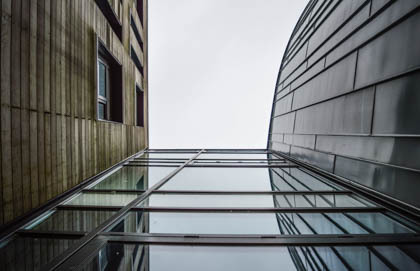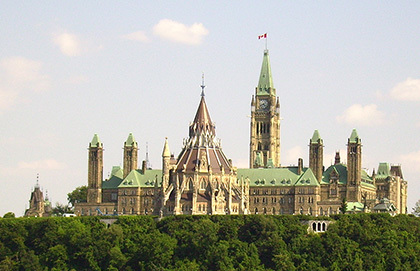It was another day of reckoning for religious Canadians. On a small stage, Paula Celani was back in court this morning fighting a fine for an "illegal" Catholic Mass in Montreal (first discussed here and here by my colleague Peter Stockland). But the spotlight, of course, was on the Supreme Court of Canada today, as it ruled on the touchy subject of court witnesses obscured by religious clothing.
N.S., the appellant, alleged that her uncle and nephew sexually assaulted her when she was a child. She reported this to her family and to the police years later. At the preliminary inquiry (the court procedure to determine if there is enough evidence to proceed to trial), N.S. sought to wear her niqab. The two accused argued that the niqab prevented them from having a fair trial. The judge at the preliminary inquiry ruled that N.S. must testify without her niqab as her religious belief was "not that strong." This was based on the fact that she did not wear a niqab on her driver's licence photo although N.S. argued that a female photographer took the picture.
The case is complex as it involves competing Charter rights. Under s. 2(a), N.S. has the right to freedom of religion. However, accused persons also have the right to a fair trial under ss. 7 and 11(d). As well, this is a case about sexual assault on a female. Police and the justice system have been working for years to encourage women to report sexual assault and testify in court. If women from certain religious communities know they cannot wear their niqab in court, they will be unlikely to report the crime or be willing to testify. That made this case doubly difficult.
The court is clearly divided on this issue. The majority decision, written by the Chief Justice, sent the issue of whether N.S. can testify in court wearing a niqab back to the preliminary inquiry judge with guidelines on how to make the decision. Two judges, LeBel and Rothstein, would have prohibited wearing the niqab to testify. Justice Abella would have always allowed it.
While some may be critical of the Supreme Court of Canada's decision in the controversial niqab case, I, for one, prefer the setting out of clear guidelines.
The niqab has been a lightning rod for public concern about accommodating religious practices. Some argue that the niqab is a symbol of women's subservient status in strict Muslim communities. Others find it disquieting as the niqab is akin to a mask. Before the last election in Quebec, there was a bill on the order paper, Bill 94, that would have denied public services to women wearing the niqab. Now, of course, Premier Marois is working on a secular charter that will presumably ban more than the niqab.
And there are plenty of examples of religious practices that make others uncomfortable. Many farmers in Western Canada don't like Hutterite colonies where Hutterian Brethren hold their property and farm communally. In southern Ontario, there has been friction between Old Colony Mennonites, who use horse and buggy, and others in the community. In Montreal, Hasidic Jews had to take a legal case to the Supreme Court of Canada to win the right to build Succah huts on the balconies of their condos to observe Succoth. Sikhs have had numerous court cases over the practice of Sikh men wearing the kirpan, a ceremonial dagger.
Within this context, I would argue that the Supreme Court got this case about right. First off, the Chief Justice said, "A secular response that requires witnesses to park their religion at the courtroom door is inconsistent with the jurisprudence and Canadian tradition, and limits freedom of religion where no limit can be justified." Of course, she then went on and indicated that the right to a fair trial is just as important. But this statement places a high value on religious freedom and indicates that a secular society cannot impose secular practices on religious adherents.
Judges are now required to go through a fairly rigorous process to determine whether a witness can wear a niqab while testifying. As the Chief Justice summarizes, the goal is that of "allowing the witness to testify with her face covered unless this unjustifiably impinges on the accused's fair trial rights."
This, it seems to me, is a distinct protection of religous freedom, and an encouraging victory for religious Canadians.
Also from Janet Epp Buckingham today: a discussion with Peter Stockland on a new effort to provide Canada with Christian lawyers. Click here for Cardus Audio.





